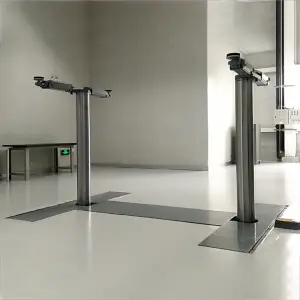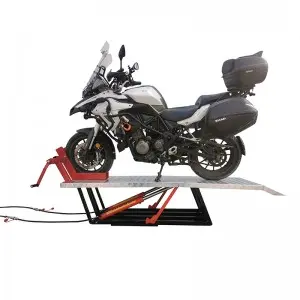****
In the fast-paced world of automotive maintenance, efficiency is key. Whether you’re a seasoned mechanic or a weekend DIY enthusiast, having the right tools can make all the difference. One such transformative tool is the car quick lift. Designed to elevate vehicles with speed and ease, these hydraulic or pneumatic lifts allow mechanics to perform services and repairs more swiftly and comfortably. In this article, we delve into the features, benefits, and best practices associated with using car quick lifts, ensuring you get the most out of your investment.
Understanding Car Quick Lifts
Car quick lifts are specialized devices engineered to lift vehicles rapidly and safely, allowing mechanics to access the undercarriage with minimal effort. They differ from traditional car lifts or jacks in several ways: primarily in their speed of operation and their ability to support a vehicle without compromising stability. Most quick lifts operate on hydraulic or pneumatic systems, allowing for smooth lifting and lowering actions, but there are also electric models that deliver impressive performance.
The Advantages of Using Car Quick Lifts

The Ultimate Guide to Car Quick Lifts: Transforming Your Automobile Maintenance Experience with Efficiency and Convenience
1. **Efficiency and Time-Saving**
One of the main advantages of car quick lifts is the time saved during routine maintenance or repair work. Traditional jacks often require manual effort to position the vehicle correctly and take a considerable amount of time to lift to the desired height. In contrast, quick lifts can elevate vehicles within seconds, making them an invaluable asset for busy shops where every minute counts.
2. **Increased Safety**
Safety is paramount when working under a vehicle. Car quick lifts are designed to provide stable support for the weight of the car, minimizing the risk of accidents or injuries. Many models come equipped with locking mechanisms that secure the lift in place, further ensuring that vehicles remain safely elevated while work is performed underneath.
3. **Improved Accessibility**
Quick lifts allow for greater accessibility to a vehicle’s undercarriage. Mechanics are able to sit or kneel comfortably while working, reducing the strain on their backs and knees. This ergonomic advantage not only enhances the working experience but also improves the quality of repairs, as technicians can focus better on their tasks without discomfort.
4. **Versatility**
Most car quick lifts can accommodate various vehicle types, from sedans to SUVs and trucks. This adaptability is essential for garages that handle a range of vehicles, ensuring that mechanics can switch between jobs without needing multiple different tools.
5. **Space Efficiency**
In a workshop, space is often at a premium, and traditional lifts can take up considerable room. Quick lifts are generally more compact and can easily fit into tight spaces. This design maximizes the usable area of your workshop, allowing for more vehicles to be serviced simultaneously.
Choosing the Right Quick Lift
When selecting a car quick lift, several factors need to be considered:
– **Lifting Capacity**: Ensure the lift can support the weight of the vehicles you typically service. It is wise to choose a lift with a capacity exceeding your heaviest vehicle.
– **Lifting Height**: Different models offer varying lifting heights. Make certain the lift can elevate vehicles high enough for the work you intend to perform.
– **Power Source**: Decide between hydraulic, pneumatic, or electric lifts based on your workshop’s capabilities and your preference for ease of use.

The Ultimate Guide to Car Quick Lifts: Transforming Your Automobile Maintenance Experience with Efficiency and Convenience
– **Safety Features**: Look for models with reliable safety features, such as locking pins or safety straps, to ensure stability while working under the vehicle.
– **Portability**: If you plan to move the lift around your workshop, consider a model that is lightweight and equipped with wheels.
Maintenance and Best Practices

The Ultimate Guide to Car Quick Lifts: Transforming Your Automobile Maintenance Experience with Efficiency and Convenience
Like all tools, car quick lifts require regular maintenance to ensure optimal performance. Here are some best practices:
– **Regular Inspections**: Check the lift for any signs of wear and tear, including hydraulic oil leaks, rust, or structural damage.
– **Cleaning**: Keep the lift clean to prevent dirt and grease build-up, which can affect its performance.
– **Proper Storage**: When not in use, store the lift in a clean, dry area to protect it from environmental damage.
– **Adherence to Weight Limits**: Always observe the weight limits specified by the manufacturer to prevent accidents.
Conclusion
In summary, car quick lifts are an excellent investment for anyone involved in automotive maintenance. Their efficiency, safety features, and accessibility make them an essential tool in any workshop, allowing for faster and safer repairs. By understanding the various advantages, how to select the right model, and maintaining it properly, you can optimize your automotive service efforts and enhance your overall productivity.Quick Lift



